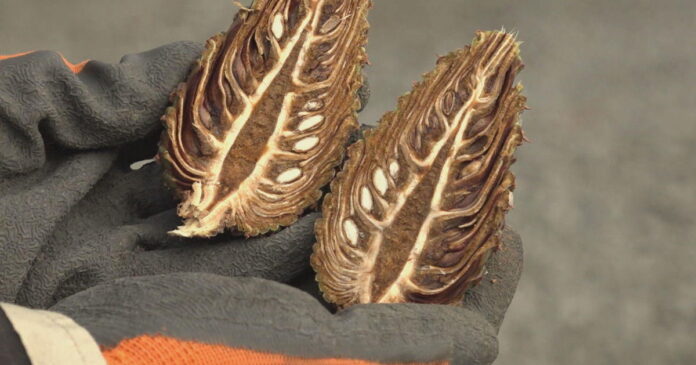Medford, Oregon — In the heart of Southern Oregon’s Fremont-Winema National Forest, crews are going to new heights to harvest a precious commodity.
“We’re looking for the ripe cones on the top of the tree,” said Brian Kittler, chief program officer for the Resilient Forests program at the nonprofit conservation group American Forests.
Using lift operators and climbers, Kittler and his team showed CBS News how his team hunts for pine cones.
“The more that we lose forest, we’re losing our clean air and clean water, our ability to remove carbon from the atmosphere and address climate change,” Kittler said.
The threat comes from the West’s unprecedented breed of megafires which, fueled by climate change, have destroyed more than 33 million acres since 2020, according to the National Interagency Fire Center. That’s around the size of the state of Arkansas.
If nothing is done to restore a forest after a wildfire, a vicious cycle begins. Fewer surviving trees means fewer pine cones for humans to pick and plant. That’s what happened in the Fremont-Winema National Forest during the Barry Point Fire in 2012, Kittler said.
“There’s basically no live trees, and there’s no natural regeneration happening,” Kittler said.
Once the pine cones are collected, they’re brought to a network of nurseries, where the seeds are extracted and grown into seedlings. One million seedlings will plant about 4,500 acres of new forest.
But the program alone is not enough to restore the forest, said Brian Reatini, a geneticist with the U.S. Forest Service. He says they’re short about 200,000 acres — and that’s just in one part of Oregon.
The warming environment also means fewer seedlings will likely grow to maturity, which takes about 20 years.
“It’s become much more arid, hotter and dryer. One of the consequences of that, it can push trees towards the edge of what they can physiologically tolerate,” Reatini said.
To help combat that problem, they’re sourcing seeds from more “drought tolerant” tree species.
The demand for stock now requires all hands on deck. Logging companies like Collins Pine are helping the Forest Service source pine cones and clear scorched land for replanting.
“Fire and ecology and insects and disease — it doesn’t care about a property line. So if we’re able to replant our little block of land, but we’re surrounded by untreated, burned forest land, eventually that’s just gonna become a brush field and it will burn again and threaten our land again,” said Galen Smith, the company’s vice president of resources.
Neighbors are helping neighbors in a program the Forest Service hopes to expand to other impacted states.
When he looks at the seedlings, Reatini said he sees “the forests that will be walked through by our children and our children’s children.”
